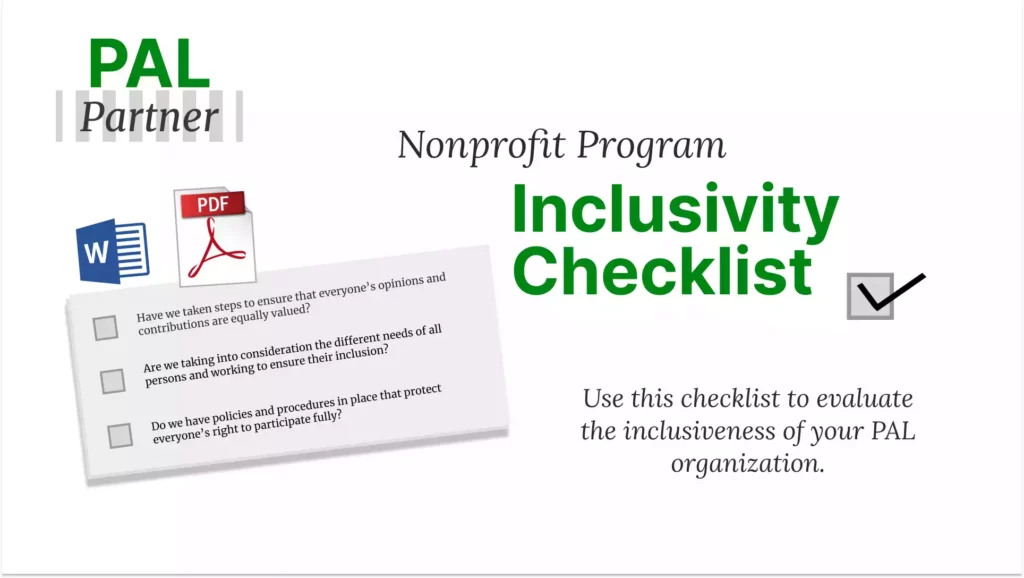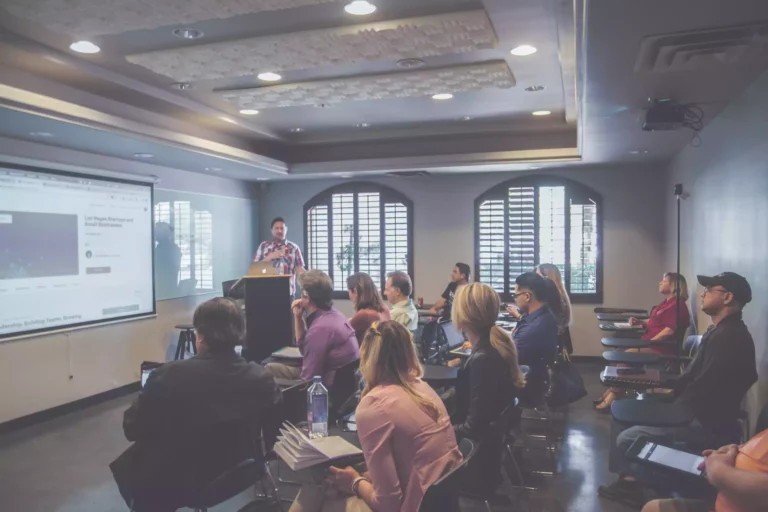PALs have been instrumental in forging pathways for youth to meet their full potential while strengthening relationships between law enforcement and our local communities. Key to this work is recognizing the vast tapestry of cultures that our young people represent. Therefore, becoming culturally competent and promoting inclusiveness should sit at the core of PAL-supported activities.
Here, at PAL Partner, we strive not just to support PALs but equip them with the tools needed for making transformative changes in their programs. Recognizing the wide array of cultures within our communities reinforces the ethical responsibility to ensure that our programs are all-embracing.
As we delve deeper into why these factors are fundamental to creating an impactful youth program, we will focus on identifying barriers to inclusion, diversifying activities, fostering dialogues about cultural differences, leveraging bilingualism – all vital to equipping our youth to navigate an interconnected global society.
Cultural competency isn’t only about appreciating varied traditions or celebrating cultural days; it begins with understanding the experiences that shaped these cultures.
Importance of Cultural Competency in Youth Programs
The strength and progress of any community lay in its ability to acknowledge, appreciate, and leverage its cultural diversity. This foundation becomes even more critical when considered in the context of youth development programs supported by PAL Partner across several communities.
Cultural competency refers to our understanding, appreciation and adaptation to the cultural diversity present within our communities. This cultural awareness helps inform planning, implementation, and delivery of our initiatives ensuring that they meet the needs of our diverse target group effectively.
Culturally competent programs validate the identity of each young person, affirming their unique backgrounds. When these youth see themselves reflected in a program’s staff and resources – from diverse role models to literacy materials – they feel recognized and valued.

Broadly investing in cultural competency has demonstrated enhanced dialogue between police and community members, deepening relationships founded on respect and understanding. Our law enforcement personnel gain insights into the intricacies of the community they protect, whilst individuals within those communities learn that policemen are protectors deserving their trust.
Given the key goal of PAL Partner is supporting Police Activity Leagues nationwide in nurturing trusting relationships with underserved communities, integrating cultural competency into our programs isn’t just necessary – it’s absolutely fundamental.
Identifying Barriers to Inclusion
While the value of cultural competency is becoming more recognized, it’s also equally important that we identify and address potential barriers preventing our programs from becoming truly inclusive.
- Unconscious Bias: This is an inherent or learned stereotype about individuals or groups that one isn’t aware of. It subtly influences our decisions and actions, making us favor one group over another without realization. For organizations like PALs, staff members ought to receive training on recognizing and eliminating these biases.
- Lack of Representation: If our volunteer and staffing pool does not accurately represent the community’s demography, it could breed feelings of alienation amongst the youth or give a sense they’re misunderstood.
- Language Differences: It’s critical to realize that a language barrier does not just prevent communication but can limit a community member’s ability to connect with, influence and aid their Police Activity Leagues.
- Lack of Accessibility: There may be barriers based on geography (distance from programs), financial constraints, or physical challenges which could prevent specific groups from participating in PAL-supported programs.
Only when we objectively identify and understand these barriers can we develop solutions to ensure inclusion. Tailored programs that recognize and celebrate each individual’s unique culture are pivotal in nurturing police-community relationships – beneficial not only for our youth but the wider community.
Diversifying Activities for Multi-Cultural Appeal
Integrating diverse activities into our PAL-supported programs will enable us to resonate with a broader audience, fostering inclusivity and collaboration. These activities should span across different cultural tenets such as arts, foods, holidays, and traditions.
Explore New and Unique Programs PAL Programs Are Offering
Inclusion of different sports popular among various cultures or cooking classes revealing global cuisines could create enthusiastic engagements. Celebrating various cultural festivals together strengthens bonds while folk storytelling sessions spark open discussions about heritage, tradition, and diversity.
Through these diversified activities, our youth are subtly empowered with lessons about unity in diversity, tolerance, mutual respect, understanding – crucial life-skills for tomorrow’s leaders. Yet their greatest utility lies in reducing cultural gaps between the community & law enforcement officers participating alongside.
Bringing Bilingualism Inboard
It’s vital for our organization to communicate that linguistic diversity should not be a barrier but an asset celebrated within the Police Activity Leagues. Youth should never feel intimidated or left out because English may not be their first language.
Incorporating bilingual resources and encouraging bilingualism among staff can make a profound difference. Providing materials in multiple languages help non-English speakers engage effectively. Enlisting bilingual volunteers not only assists communication but affirms our commitment to representing every community member in our initiatives.
For many youth programs, organizing language-learning experiences where youngsters and police officials learn basic greetings from different languages would serve dual purposes – removing linguistical barriers over time and establishing more profound relationships built on shared learning experiences.
“Diversity is not a barrier to overcome, but an exciting synergy to discover. In learning about others, we learn more about ourselves and create bridges that enrich us all.”
Fostering Safe Spaces for Open Dialogues about Cultural Differences
One of the most significant strategies for building cultural competency and inclusivity is fostering safe spaces where authentic, challenging conversations on cultural differences can occur.
Open dialogues on cultural stereotypes, prejudices or misconceptions must be endorsed. Seminars involving successful multicultural individuals sharing their experiences or police officers discussing how inclusivity enhanced their job performance can open up realizations and form deeper connections. Community roundtable discussions where law enforcement and youth discuss their unique challenges and successes in navigating their cultural identities can be effective too.
Training workshops could help equip police and staff to address sensitive racial topics tactfully. Hosting cross-cultural exchange programs allow participants from different ethnicities to share experiences, helping to break down prejudices and misconceptions.
Initiating dialogue around cultures different from our own broadens perspectives and bridges gaps of understanding. This provides a chance to disassemble biases and rise above stereotypes while preserving trust and collaboration among diverse community cohorts and the law enforcement team.
Through this, Police Activity Leagues affiliated with PAL Partner continue creating not only safe streets but secure bonds flavored with the richness that is our vibrant cultural melting pot.
These practices don’t just embolden youth’s cultural pride but help make law enforcement officers more context-aware. Fostering such open environments creates understanding, eventually shaping a community that upholds respect, acceptance, cooperation – attributes essential for any strong society.
Next Steps for Your Youth Program
Promoting cultural competency and inclusivity isn’t a one-time initiative – it is a continuous journey that requires effort, commitment, and sometimes, uncomfortable learning. Utilizing resources like Tips for Creating a Safe and Inclusive Environment at PAL Programs can prove invaluable in this journey.
Communities, no matter how small or large, are complex ecosystems with diverse cultural heritages that continually evolve. As the backbone supporting PALs across America, we have a responsibility to ensure our programs keep pace with this evolution.
Our future leaders should feel seen, heard, and respected regardless of their ethnic identities. They deserve to participate in an environment free of biases and full of respect for everyone’s unique stories.
As we move forward, let’s make our PAL-supported programs the catalysts for these ideals. Let’s aspire high for every young person who participates in our programs – because through them, we can shape compassionate individuals and foster a safe, inclusive community rich in mutual respect and cultural understanding.
The route to fostering inclusive environments and bridging community-police gaps lies not just in highlighting diversity but celebrating it at all levels of engagement. By leveraging resources like “Tips for Creating a Safe and Inclusive Environment at PAL Programs”, focusing on constant learning, collaboration, and transparency, we can jointly create a significant difference.
After all, each step taken towards these broader goals echoes our core mission at PAL Partner – to amplify trust between communities and law enforcement one interaction at a time.
As we take thoughtful strides towards implementing these essential components into our PAL initiatives nationwide, let’s aim for more than mere tolerance – let’s strive for heartfelt appreciation and embracement of diversity. By doing so, we reaffirm our commitment to inclusiveness where every young person finds a reflection of themselves and police officers form genuine connections, further establishing the foundation of mutual understanding that is crucial to community prosperity.



